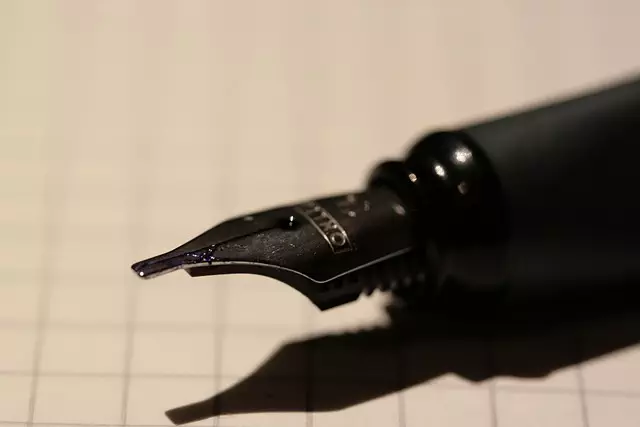Botox and dermal fillers are popular cosmetic treatments for anti-aging, targeting different aspects of facial aesthetics. Botox, derived from bacteria, relaxes muscles to reduce dynamic wrinkles like crow's feet and frown lines, lasting 3-6 months. Dermal fillers add volume and smoothen deep wrinkles or hollows by injecting substances like hyaluronic acid, offering results from several months to years. The choice depends on individual concerns: Botox for muscle-related wrinkles, dermal fillers for volume loss or deep lines. Both provide non-invasive, effective rejuvenation within 24 hours, with minor side effects subsiding quickly. Consulting a dermatologist ensures personalized, safe outcomes based on skin type, wrinkle depth, and goals. Regular maintenance is crucial to extend the benefits of these treatments.
“Uncover the secrets to achieving youthful, radiant skin with our comprehensive guide on Botox and dermal fillers. In a world where aging is often celebrated, these treatments offer powerful tools for those seeking to maintain or restore their skin’s elasticity and combat fine lines and wrinkles. From understanding the science behind Botox’s muscle-relaxing properties to exploring the benefits of dermal fillers, this article delves into the key differences and similarities between these popular anti-aging solutions, helping you make an informed choice for your skincare journey.”
Understanding Botox and Dermal Fillers: Unlocking the Secrets to Youthful Skin

Botox and dermal fillers are two popular cosmetic treatments that have taken the world by storm, promising younger-looking skin. While both aim to enhance facial aesthetics, they work in distinct ways. Botox, a type of protein derived from bacteria, is injected into muscles to temporarily paralyze them, reducing the appearance of wrinkles and fine lines. On the other hand, dermal fillers are substances, often hyaluronic acid or collagen, that are injected into the skin to add volume, smoothen out wrinkles, and enhance facial contours.
Understanding the differences between Botox and dermal fillers is crucial when deciding on a skincare treatment. Each has its unique benefits and applications, catering to different needs. For instance, Botox is ideal for targeted areas like forehead lines, crow’s feet, or frown lines, whereas dermal fillers are more versatile, addressing volume loss in the cheeks, jawline, or lips, providing a plumping effect. Knowing your options allows for an informed decision, ensuring you unlock the secrets to achieving youthful skin effectively.
The Science Behind Botox: How It Works and Its Benefits

Botox, a neurotoxin derived from bacteria, has become a popular choice for achieving younger-looking skin. Its mechanism of action involves blocking specific nerve signals that cause muscle contractions, which over time can contribute to wrinkles and fine lines. When injected into targeted areas, Botox relaxes these muscles, preventing them from pulling on the skin and leading to a smoother appearance. This non-invasive procedure offers a temporary yet effective solution for dynamic wrinkles, providing a youthful glow without surgery or extensive downtime.
Unlike dermal fillers that add volume and enhance facial contours, Botox focuses on relaxing muscles to reduce the signs of aging. While dermal fillers can be effective for specific types of wrinkles and scar revision, Botox is particularly advantageous for fine lines, crow’s feet, and frown lines between the brows. Its temporary nature means results can last anywhere from 3-6 months, after which touch-up treatments may be needed to maintain the desired effect, making it a flexible option for those seeking subtle yet noticeable enhancements.
Dermal Fillers: A Comprehensive Overview and Their Role in Anti-Aging

Dermal fillers and Botox are both popular anti-aging treatments, but they work in distinct ways. While Botox primarily targets dynamic wrinkles by paralyzing muscles, dermal fillers focus on plumping and lifting the skin by adding volume to specific areas. These fillers are typically made of hyaluronic acid, a natural substance found in our bodies, making them safe and well-tolerated for most individuals. Unlike Botox, which wears off over time, dermal fillers can provide results that last from several months to years, depending on the product used.
When considering Botox vs dermal fillers, it’s crucial to understand your specific concerns. For fine lines and wrinkles caused by muscle movement, Botox is an excellent choice. On the other hand, dermal fillers are ideal for addressing deep facial wrinkles, hollows, or lost volume, offering a more immediate and longer-lasting solution. Both treatments have their advantages and can be combined to achieve optimal anti-aging results tailored to individual needs.
Comparing Botox and Dermal Fillers: Key Differences and Similarities

When considering non-surgical facial rejuvenation treatments, understanding the key differences and similarities between Botox and dermal fillers is essential for making an informed decision. Both procedures aim to reduce signs of aging but target distinct aspects of skin appearance. Botox primarily focuses on relaxing muscle activity, thereby preventing dynamic wrinkles from forming or deepening. This makes it ideal for fine lines around the eyes, forehead, and mouth. On the other hand, dermal fillers enhance facial volume loss associated with aging by injecting a substance beneath the skin’s surface to lift and contour areas like the cheeks, temples, or jawline.
While Botox and dermal fillers serve different purposes, they share some similarities. Both treatments are non-invasive, minimally recovery procedures that can significantly improve facial aesthetics in as little as 24 hours. They are safe when administered by a qualified professional and offer long-lasting results, with maintenance treatments recommended to sustain the desired effects. However, Botox typically provides temporary results lasting 3–6 months, whereas dermal fillers can last from 6 months to several years, depending on the filler type used.
Choosing the Right Treatment: Factors to Consider for Your Skin Type and Concerns

When considering Botox or dermal fillers for achieving a younger-looking skin, understanding your specific skin type and concerns is crucial. Both treatments have their unique benefits and are suited to different needs. For instance, Botox is particularly effective in smoothing fine lines and wrinkles caused by muscle movement, making it ideal for areas like the forehead, crow’s feet, and frown lines. On the other hand, dermal fillers are more appropriate for addressing volume loss, deep wrinkles, and enhancing facial contours.
Factors to consider include skin elasticity, depth of wrinkles, personal goals, and medical history. For instance, individuals with thinner or more delicate skin might prefer dermal fillers as they provide immediate volume restoration without the need for muscle relaxation. In contrast, Botox is often recommended for those with deeper wrinkles seeking a more subtle yet effective result over time. Consulting with a dermatologist can help tailor the treatment choice to your unique needs, ensuring optimal outcomes and minimal side effects.
The Application Process: What to Expect During a Botox or Filler Session

During a Botox or filler session, patients can expect a relatively quick and virtually painless experience. The process typically begins with a consultation where a dermatologist or aesthetic specialist assesses your skin and determines the best treatment option—Botox or dermal fillers—based on your specific needs and goals. This step is crucial for ensuring optimal results.
Following the consultation, the chosen treatment area is cleaned and prepared. For Botox, fine needles are used to inject the serum into specific muscles, while dermal fillers involve injecting a gel-like substance beneath the skin’s surface. Throughout the procedure, patients may experience mild discomfort but generally need not worry about significant pain. After the session, there might be minor redness or swelling, which usually subsides within a few days. This transformative process offers immediate results, providing a younger-looking appearance with enhanced definition and smooth, radiant skin. When compared to Botox vs dermal fillers, each has its unique advantages, catering to different needs for achieving youthful skin.
Results and Expectations: Realistic Outcomes and Potential Side Effects

When considering Botox or dermal fillers for achieving a younger-looking complexion, it’s crucial to understand the differences in results and potential side effects. Both treatments offer significant anti-aging benefits, but they work in distinct ways. Botox, a neurotoxin, smoothes fine lines and wrinkles by relaxing facial muscles, while dermal fillers enhance volume and contour by plumping the skin with hyaluronic acid or collagen.
Realistic outcomes vary based on individual factors like skin type, age, and lifestyle. With Botox, results typically last 3-6 months, providing a subtle yet noticeable reduction in dynamic wrinkles. Dermal fillers can last up to 2 years, offering more dramatic improvements in facial volume and contouring. However, both procedures carry potential side effects such as temporary redness, swelling, or discomfort at the injection site. Rare but serious reactions may include allergic responses or asymmetry, emphasizing the importance of choosing a qualified professional for optimal, safe results, particularly when considering Botox vs dermal fillers.
Maintenance and Follow-up Care: Ensuring Long-Lasting Youthful Skin

Botox and dermal fillers are popular treatments for achieving a youthful complexion, but their effects vary. While Botox temporarily relaxes facial muscles to reduce dynamic wrinkles, dermal fillers plump and enhance specific areas by adding volume. Regular maintenance and follow-up care is key to extending the benefits of these procedures. This includes staying hydrated, protecting your skin from sun damage with SPF, and avoiding strenuous activities or certain medications that may impact the healing process. Regular touch-ups every few months are often necessary for both Botox and fillers to maintain optimal results, ensuring long-lasting youthful skin.
